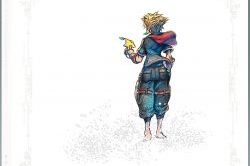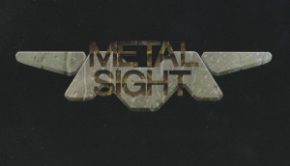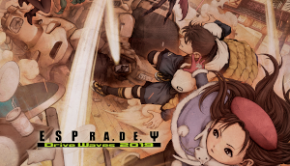Evolution of Arcade Soundtracks
When one mentions Arcades, memories of hits like Space Invaders, Pac-Man, Donkey Kong, Ghouls n’ Ghosts, Mario Bros., etc. often dominate their thoughts on the subject. Since 1978 till today, the Arcade gaming scene went through some significant changes. One of these is how the sound portions of the game have been given more and more attention as time went on. At first, there was no melody to speak of, just sound effects during key events in a gaming session.
In 1978, Taito’s Space Invaders appeared and became an instant hit, causing a national shortage of yen. The aspect players remembered the most was the sound. Tomohiro Nishikado, who designed the game entirely on his own, created the “soundtrack” by creating a series of beeps that went faster as the Invaders were closing in on the player, which created a perfect sense of tension. One of the first Arcade games to have an actual musical track in the background was Namco’s Xevious in 1982. Masanobu Endo, who designed the game on his own, also created one musical track — a five second track that plays constantly — which is constantly remixed by fans.
Thus far, these are two examples of very basic sound design for an Arcade game. Let’s hop to 1985, where Konami’s Gradius is one of the better examples of an early but complete soundtrack to an Arcade game. It has several stage themes, a boss theme, opening / ending theme, game over, and name entry themes. Miki Higashino, the game’s composer, made sure to create music that would stick to the player. Seeing that some of her themes are still used and there are many remixes, it’s safe to say that she succeeded admirably. Another good example of a well crafted Arcade score was Taito’s Darius in 1986. Hisayoshi Ogura created various experimental boss themes so one would never get tired from hearing the same boss theme over and over.
From 1985 to the early 1990s, the majority of the Arcade music produced was mainly chip-based. A few examples that break out of the mould are Namco’s Dragon Saber in 1990 and Seibu Kaihatsu’s Viper Phase 1 in 1995. These two benefited from better sound capabilities which allowed for synthesized instruments as opposed to chip-based music. Namco also did some significant breakthroughs with Ridge Racer in 1993, which is one of the first games to feature sampled audio and one of the first to employ a general techno style in music, courtesy of electronic veterans Shinji Hosoe, Ayako Saso, and Nobuyoshi Sano.
Even in its early days, Arcade game music was just as musically diverse as its console counterparts. One of the earlier examples would be Sega’s Golden Axe in 1989, which featured a percussion-centered score, inspired a bit by Basil Poledouris’ Conan the Barbarian film score. Going later in 1996, Battle Garegga received a synthetic industrial score by Manabu Namiki that fitted perfectly with the war-torn scenery. Cave’s DoDonPachi in 1997 was one of the first Arcade games to feature sampled guitar, which really made it stand out. SNK’s Metal Slug X and Metal Slug 3 at the end of the century are other examples of scores that featured sampled guitar, but they with mixed with several other instruments like saxophone, trumpet, and so on.
Starting in the 2000s till now, Arcade boards now have the ability to stream audio and possess more space for music, which means more and more Arcade games began using live instruments. With works like Metal Slug 4 and King of Fighters: Maximum Impact, Toshikazu Tanaka also became famous for using powerful instrumental samples in numerous musical styles. Another stellar example is Arc System Works’ Guilty Gear XX in 2002, which featured performances by the equivalent of a rock band. The gothic rock score to Cave’s Death Smiles is the most recent release that takes advantage of this feature, featuring energetic electric guitar performances by Noriyuki Kamikura. One can only hope that this trend will continue.
How do console ports compare to their Arcade originals? For the earlier titles, the Arcade sound board was always more powerful than the console’s own sound chip. Some examples are the Genesis ports of Golden Axe and Altered Beast; the sound chip could not handle the more high-end instrument samples used in the Arcade versions, so the samples end up sounding very tinny and dated. The Super Nintendo version of Earth Defence Force lacked the more full bass that the Arcade original had while the console versions of Street Fighter II varied immensely in quality as a result of various limitations. The TurboGrafx-16 version of Dragon Saber sounded especially dull compared to its lush Arcade original.
When CD-based consoles came around, Arcade ports received tremendous improvements, especially in the music department. Two examples are Sega’s Golden Axe: The Duel and Technosoft’s Hyper Duel. Both were ported on the ill-fated Sega Saturn, but benefited of Redbook Audio technology. They both now had much better instrument samples and simply had a more dynamic feel to them. Arika went a step further with their Playstation ports of Street Fighter EX; instead of simply upgrading the instrument samples, they used all live instruments.
More recent examples of Arcade ports being handled well would be Seibu Kaihatsu’s Raiden IV and Raiden Fighters Aces by Go Sato for the Xbox 360. One has additional music with live guitars while the other received a much needed remastering. Super Street Fighter II Turbo HD Remix, Otomedius G, and Death Smiles Mega Black Label will also benefit from completely arranged soundtracks done in a variety of styles by major names in the doujin and official game music communities.
All in all, Arcade soundtracks have evolved right alongside their console cousins and are pretty much on equal terms as far as sound capabilities and sound design goes. Featuring a wide variety of styles, Arcade game soundtracks are just as important as the console RPG giants that feature 3~4 discs of music. Please give them a little love, even if you’ve never played the actual Arcade game machine.
Posted on September 1, 2011 by Luc Nadeau. Last modified on March 11, 2014.














